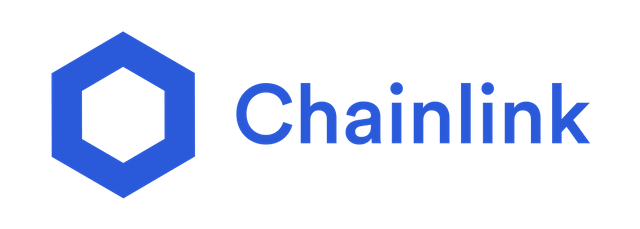Steemit Crypto Academy Week 4 Task | Ethereum Blockchain: Chainlink | lesson by @gbenga
Good day to everyone in this wonderful community. It's another opportunity to learn from the crypto professors and I learnt from the proficient professor @gbenga where he lectured about the Ethereum blockchain. It was such a comprehensive and holistic lecture which has a task attached to it. In this article, I will be writing about of the projects built on the Ethereum Blockchain, Chainlink.

Before I proceed to my main subject of discussion, let me enlighten my readers about the basics of the Ethereum Blockchain.
Ethereum can be said to be the mother of Decentralized Applications (dApps). It is a decentralized computing platform which uses multiple noses simultaneously and allows the creation of applications but in a centralized manner. It allows for the creation and running of Decentralized Applications and also the use of smart contract on its blockchain.
Vitalik Buterin founded the blockchain in 2015 which was an outcome of his falling in love with the blockchain technology and wanting to solve a problem instead of waiting for others to solve it.
Let's proceed to our main subject of discussion, Chainlink.
WHAT IS CHAINLINK?
Chainlink is a cryptocurrency based on the Ethereum blockchain. The LINK token inherits the functionality of the ERC-20 standards, although it itself complies with the ERC-677 standard. It is a decentralized network of noses that provides data and information from the off-blockchain sources to the on-blockchain smart contracts through oracles. It is a decentralized oracle network that provides real-world data to smart contracts on the blockchain.
HISTORY OF CHAINLINK
The story of Chainlink can be said to start with it's white paper published in 2017 by Steve Ellis, Ari Juels and Sergey Nazarov. In it, the authors specifically outlined their vision for the decentralized oracle network. This oracle was meant to solve one of the biggest problems of the blockchain which is the blockchain's inability to fetch reliable data from the real world.
Chainlink is designed with on-chain and off-chain modules which are interconnected and can be upgraded to flexibly adapt to evolvement of technology. Decentralization is achieved by both retrieving data from multiple sources and processing it with multiple nodes.
WHO MANAGES THE CHAINLINK TECHNOLOGY?
The Chainlink technology is managed by Fintech company SmartContract Chainlink Ltd., with Sergey Nazarov as CEO. The research team is united under Chainlink Labs. Since the publishing of the white paper, the project has passed a number of important milestones. In 2017, the chainlink ICO raised $33M. In 2019, the chainlink manifest was launched on Ethereum. Since then, the technology was developed to work on different blockchains _ as "chainlink is blockchain agnostic".
CHAINLINK'S NATIVE TOKEN
Chainlink's native token called LINK has been trading since 2017 about has shown significant and rapid growth in Q2 - Q3 2020. As of the time I wrote this article, LINK is the number 5 cryptocurrency by market cap ( with more than $5B market cap).
CHAINLINK FEATURES AND BENEFITS
Chainlink features
Chainlink's main focus is working with smart contracts. Chainlink provides the smart contract with access to any external API you want to connect it to. Thus, it is possible to make a payment through a contract to any payment system or banking network.
ChainLink smart contracts serve three functions:
Reputation assessment. Users can use smart contracts with a specific range of parameters that includes an oracle reputation called a service level agreement. Oracles who violate the rules of the network and supply incorrect data are punished and also receive a demotion. In the case when the smart contract receives a sufficient number of applications, a service agreement with ChainLink begins.
Working with external data. When out-of-line oracles are selected, they make a programmatic agreement and deliver the requested data.
Aggregation. As a third step, the aggregation contract collects all the data transmitted by the off-chain oracles and then averages it to create a weighted aggregate response.
In simple terms, Chainlink can be described as a decentralized network of oracles supplying data.
CHAINLINK ORACLES
Oracles are the servers that will supply data. They are the providers of data for what is happening in the real world. Thanks to them, the data goes to the blockchain and the smart contract understands what is happening, draws conclusions and makes transactions. For the process to be effective, you need to know that oracles work honestly and that vendors don't cheat and deliver truthful information. To prove the seriousness of his intentions and honesty, the oracle freezes funds in the form of a guarantor.
ChainLink oracles can use datasets, APIs and other, almost any, sources from the outside world. This will be useful for projects that need external data to work with. ChainLink aims to become a bridge between traditional information and the technology of the future — blockchain.
DISADVANTAGES OF CHAINLINK
There are too few guarantees for investors that the partnership will be long and fruitful.
Low development speed. It is not known how long it will take for Chainlink to implement a real working solution affecting the execution of financial transactions. Moreover, there is no officially released roadmap that could be guided by.
In conclusion, Ethereum has brought great innovation the blockchain technology. I specially thank my wonderful professor @gbenga and I hope to learn more from you sir.
Thank you for reading.
Special regards;
Cc: @steemcurator01
Cc: @steemcurator02
Cc: @steemitblog
Cc: @gbenga
Written by; @chivanik
.jpeg)
.jpeg)


Beautiful post